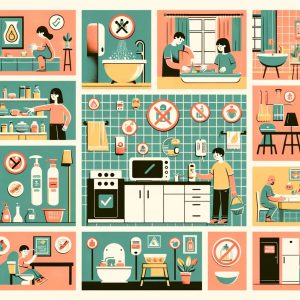ERGONOMIC HAZARDS
The science of ergonomics studies and evaluates a full range of tasks including, lifting, holding, pushing a load.
Many ergonomic problems result from technological changes such increased assembly line speeds, adding specialized tasks, and increased repetition, some problems arise from poorly designed job tasks.
Any of those conditions can cause ergonomic hazards such: vibration and noise, eye strain, repetitive motion, and heavy lifting problems.
Improperly designed tools or work areas also can be ergonomic hazards.
Repetitive motions or repeated shocks over prolonged periods of time as in jobs involving sorting, assembling, and data entry can often cause irritation and inflammation of the tendon of the hands and arms, a condition known as carpal tunnel syndrome.
Ergonomic hazards are avoided primarily by the effective design of a job or jobsite and by better designed tools or equipment that meet workers needs in terms of physical environment and job tasks.
Through worksite analyses, employers can set up procedures to correct or control ergonomic hazards by using the appropriate engineering controls (e.g., designing or redesigning work stations, lighting, tools, and equipment)
Teaching correct work practices e.g., proper lifting methods employing proper administrative controls e.g., shifting workers among several different tasks, reducing production demand, and increasing rest breaks and, if necessary, providing and mandating personal protective equipment.
Evaluating working conditions from an ergonomics standpoint involves looking at the total physiological and psychological demands of the job on the worker.
Overall, industrial hygienists point out that the benefits of a well-designed ergonomic work environment can include increased efficiency, fewer accidents, lower operating costs, and more effective use of personnel.
In sum, industrial hygiene encompasses a broad spectrum of the working environment.
WORK ANALYSIS
A worksite analysis is an essential first step that helps an industrial hygienist determine what jobs and work stations are the sources of potential problems.
During the worksite analysis, the hygienist measures and identifies exposures, problem tasks, and risks. The most-effective worksite analyses include all jobs, operations, and work activities.
The industrial hygienist inspects, researches, or analyzes how the particular chemicals or physical hazards at that worksite affect worker health. If a situation hazardous to health is discovered, the industrial hygienist recommends the appropriate corrective actions.
RECOGNIZING AND CONTROLLING HAZARDS
Industrial hygienists recognize that engineering, work practice, and administrative controls are the primary means of reducing employee exposure to occupational
hazards.
Engineering controls minimize employee exposure by either reducing or removing the hazard at the source or isolating the worker from the hazard. Engineering control include eliminating toxic chemicals and substituting non-toxic chemicals, enclosing work processes or confining work operations, and the installation of general and local ventilation systems.
Work practice controls alter the manner in which a task is performed. Some
fundamental and easily implemented work practice controls include
(1) changing existing work practices to follow proper procedures that minimize exposures while operating production and control equipment
(2) inspecting and maintaining process and control equipment on a regular basis
(3) implementing good housekeeping procedures
(4) providing good supervision
(5) mandating that eating, drinking, smoking, chewing tobacco or gum, and applying cosmetics in regulated areas be prohibited.
Administrative controls include controlling employees exposure by scheduling
production and tasks, or both, in ways that minimize exposure levels. For example, the employer might schedule operations with the highest exposure potential during periods when the fewest employees are present.
When effective work practices or engineering controls are not feasible or while such controls are being instituted, appropriate personal protective equipment must be used.
Examples of personal protective equipment are gloves, safety goggles, helmets, safety shoes, protective clothing, and respirators. To be effective, personal protectiveequipment must be individually selected, properly fitted and periodically refitted;conscientiously and properly worn; regularly maintained; and replaced, as necessary.






